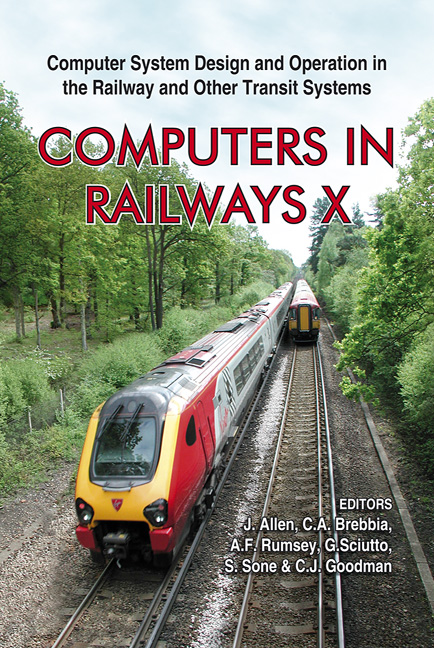A Fast Method For Estimating Railway Passenger Flow
Price
Free (open access)
Transaction
Volume
88
Pages
9
Published
2006
Size
475 kb
Paper DOI
10.2495/CR060181
Copyright
WIT Press
Author(s)
Y. Nagasaki, M. Asuka & K. Komaya
Abstract
To improve the situation for crowded commuters in Japan, it is important to plan a train schedule that considers passenger behavior, such as their choice of trains and the transfer stations used to reach their destinations. However, it is difficult to directly measure such detailed behavior using the present infrastructures, with which we can only get OD (Origin-Destination) data from the automatic ticket gates. The obtained OD data only consists of the number of passengers for each origin-destination and the time each passenger passes through the gates. In this article, to contribute to the planning phase of a new train schedule, the authors propose a method for estimating railway passenger flow using OD data. This paper firstly points out that the problems of estimating passenger flow can be boiled down to a shortest path problem of graph theory by assuming a certain passenger behavior model. By representing train operations in a graph structure, we can assume that a passenger will use the minimum cost path to his/her destination. This paper secondly proposes a method for conducting fast searches of the graph structure. The method uses the fact that railways operate on a time schedule. This method can estimate passenger flow fast enough so as to apply it to a practical train schedule planning support system. Lastly, the authors show the results of applying the passenger flow estimation system to a railway in an urban area in Japan. Keywords: train schedule evaluation, passenger flow estimation, graph theory, shortest path problem, incremental assignment procedure. 1 Introduction Currently, planning train schedules depends mainly on expert planners’ experiences and intuitions, although a computer based decision support system is gradually appearing. To promote the use of a computer assistance system in a
Keywords
train schedule evaluation, passenger flow estimation, graph theory, shortest path problem, incremental assignment procedure.





